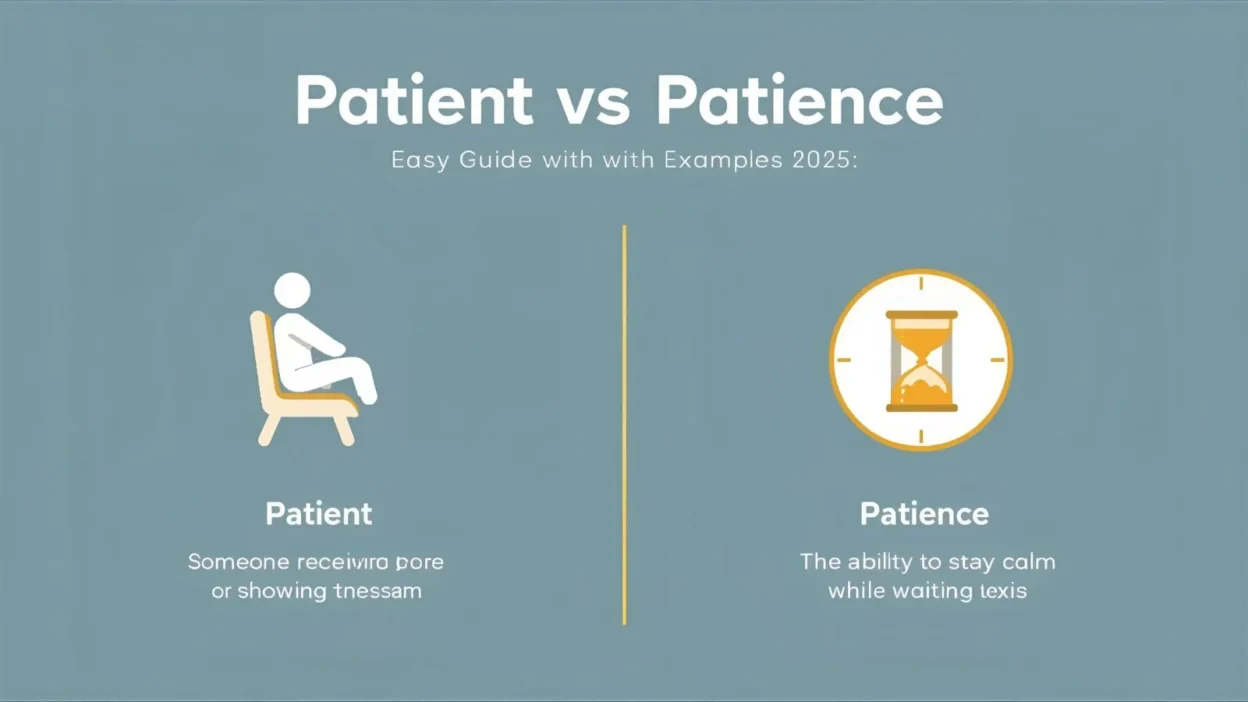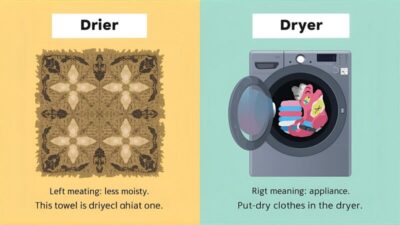Have you ever typed “patient or patience” into Google, wondering which one is correct? You’re not alone.
Thousands of people search for this phrase every month, and the confusion makes sense: the two words sound exactly the same but carry very different meanings.
Both are correct in English, yet they are used in completely different contexts.
This mix-up often happens in emails, professional writing, or even social media posts, where a small mistake can change the meaning of a sentence.
Understanding when to use patient (a noun or adjective) and when to use patience (a noun) is key to clear, professional communication.
In this article, you’ll learn the quick answer, the origins of both words, spelling rules across English dialects, and everyday examples.
You’ll also see how people worldwide use these terms differently, supported by Google Trends data. By the end, you’ll know exactly when to use “patient” and when to use “patience.”
Patient or Patience – Quick Answer
- Patient: A person receiving medical treatment, or someone who is calm and tolerant.
- Example: The doctor saw three patients today.
- Example: She was patient while waiting for the bus.
- Example: The doctor saw three patients today.
- Patience: The ability to stay calm and tolerant in difficult situations.
- Example: Learning a new language requires patience.
- Example: Learning a new language requires patience.
👉 Tip: If you are talking about a person or describing someone as calm, use patient. If you mean the quality of being calm, use patience.
The Origin of Patient or Patience
Both words come from the Latin root pati, meaning to suffer or endure.
- Patient entered English from Old French pacient, first used in the 14th century to describe someone who suffers or undergoes treatment.
- Patience also came from Old French pacience, meaning endurance or the ability to tolerate suffering.
The difference is in word formation:
- -ent → describes a person or state.
- -ence → describes a quality or condition.
That’s why we have patient (the person or state of being calm) and patience (the quality of calm endurance).
British English vs American English Spelling
Unlike words such as “color/colour” or “realize/realise,” there is no spelling difference between “patient” and “patience” in British and American English. Both spellings are exactly the same.
| Word | British English | American English |
| Patient | ✅ Same | ✅ Same |
| Patience | ✅ Same | ✅ Same |
👉 This makes it easier: no matter where you are writing from, the spelling rules for these two words don’t change.
Which Spelling Should You Use?
Since the spelling is the same across English varieties, the key is meaning, not location.
- In the US: Use “patient” for people in healthcare and calmness as an adjective. Use “patience” for the virtue.
- In the UK & Commonwealth: Same rules apply.
- In global English writing: Stick to the same usage. Readers worldwide understand both terms without confusion.
Common Mistakes with Patient or Patience
- ❌ Thank you for your patient while I fix this issue.
✅ Thank you for your patience while I fix this issue. - ❌ He was a patience man.
✅ He was a patient man. - ❌ The patience is waiting for the doctor.
✅ The patient is waiting for the doctor.
👉 Always check if you’re describing a person/state (patient) or the virtue/quality (patience).
Patient or Patience in Everyday Examples
- Emails: Thank you for your patience as we resolve this matter.
- News: Hospitals treated 50 patients after the storm.
- Social Media: Parenting is teaching me patience every day.
- Formal Writing: Leaders must be patient and show great patience when facing challenges.
Patient or Patience – Google Trends & Usage Data
Google search data shows that people search for “patient” more often than “patience”, mainly because of its medical use. However, searches for “patience” rise in self-help, motivation, and lifestyle contexts.
| Country | Most Searched Term | Context |
| United States | Patient | Healthcare, hospitals |
| United Kingdom | Patient | Healthcare, but patience also popular in quotes |
| India | Patience | Self-help, education |
| Canada | Patient | Healthcare focus |
| Australia | Patience | Personal growth, lifestyle |
Conclusion
The confusion between patient and patience comes from the fact that they sound identical but mean different things. Patient can mean a person receiving treatment or someone calm, while patience refers to the ability to remain calm in difficult times.
Unlike many English words, there’s no spelling difference between American and British English—making it simple to use correctly.
If you’re writing to thank someone, always use “patience.” If you’re talking about people in healthcare or describing a calm person, use “patient.”
Understanding this small but important difference will make your writing clearer, more professional, and free of embarrassing mistakes.
FAQs:
1. Is it correct to say “thank you for your patient”?
No. The correct phrase is “thank you for your patience.”
2. Can “patient” be an adjective?
Yes. Example: She is very patient with her children.
3. What is the plural of “patient”?
The plural is patients (people receiving treatment).
4. Is patience a skill or a virtue?
It is often called both. In personal development, patience is a skill. In philosophy, it is a virtue.
5. Can you use “patience” in a medical context?
Not usually. In medicine, we use “patient” (the person). “Patience” refers to calmness, not healthcare.
6. Do British and American English spell these words differently?
No. Both use “patient” and “patience” the same way.
7. Which word is used more often?
Globally, “patient” is searched more due to healthcare-related contexts.

I’m Emma Collins, a grammar expert and author at Grammarnestly.com. I love helping readers master English with simple, practical grammar guides.
When I’m not writing, I enjoy reading, coffee, and exploring the beauty of language.



